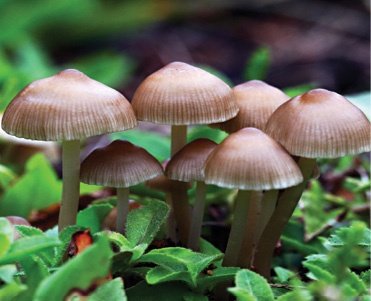 Nature has gifted Pakistan with most suitable environmental conditions of temperature and humidity, from sea level to the high mountains region. Thus different types of wild mushrooms are easily grow throughout the country around the year. In the country wild mushrooms are traditionally collected from the frost regions after raining.
Nature has gifted Pakistan with most suitable environmental conditions of temperature and humidity, from sea level to the high mountains region. Thus different types of wild mushrooms are easily grow throughout the country around the year. In the country wild mushrooms are traditionally collected from the frost regions after raining.
 Mushrooms are a food of good nutritional value, some have medicinal value as dietary supplement and there are some that have both of these properties. The public has become increasingly concerned about health and nutrition matters in recent era, and this has sparked the commercialization of natural foods consumed as dietary supplements. Mushrooms can be considered a functional food (medicinal food or nutritional food) in this way, such functional or medical foods should not claim to cure disease, but there are an increasing number of scientific studies that strongly support some functional foods such as mushrooms having a role in disease prevention and in some cases of bringing about suppression or remission of a diseased state.
Mushrooms are a food of good nutritional value, some have medicinal value as dietary supplement and there are some that have both of these properties. The public has become increasingly concerned about health and nutrition matters in recent era, and this has sparked the commercialization of natural foods consumed as dietary supplements. Mushrooms can be considered a functional food (medicinal food or nutritional food) in this way, such functional or medical foods should not claim to cure disease, but there are an increasing number of scientific studies that strongly support some functional foods such as mushrooms having a role in disease prevention and in some cases of bringing about suppression or remission of a diseased state.
Mushrooms provides many of the nutritional attributes of produce as well as attributes more commonly found in meat, beans or grain and bananas because bananas contain high potassium food. They give maximum nutritional benefits upon cooking. About 100g of crudes edible mushroom contain Protein (3.6g), Fat (0.3g), Cholesterol 0, Carbohydrates (1.5g), Dietary fiber (2.5g) Thiamin (0.03mg), Riboflavin (0.41mg), Niacin (4.1mg), Sodium (7mg) Potassium (305mg), Calcium (2mg), Iron (0.2mg), Zinc (0.2mg), Magnesium (9mg).
In Pakistan, mushroom cultivation has tremendous prospect although, at present only some wild types of mushrooms are eaten by rural folk. Two types of Morel (Morchella esculenta and Morchella elata) are highly prized edible mushroom in Pakistan. Morels grow naturally in the temperate forest of Pakistan. They are collected from northern mountain ranges of Hindukush, Himalays and Karakorum, including Dir, Mingora, Swat, Kalam, Mansehra, Margalla Hills, Bagh, Chakoti (Azad Jammu and Kashmir) Zayrat and Zhob (Baluchistan). About 90 per cent of the total morels produced in Pakistan is collected from Hindu Kush and Himalayan ranges. The collection is made by 30 per cent women, 27 per cent men, and 33 per cent of children. About 30,000 forest dewellers are involved in collection and processing of morels in the NWFP. Dry Morels are sold in the local markets from where they are exported to Europe and Middle East. In Sindh province wild mushroom Podaxis pistillaris grow after rain, it is desert mushroom and commonly known as Khumbi. Another important edible and consuming mushrooms in Pakistan Agaricus bisporus, (button mushroom) Pleurotus osterus (common oyster mushroom), Volvariella volvacea (padistraw mushroom), Lentinula edodes (Shii-take mushroom). These mushrooms are cultivated on a huge scale and compete in commercial demand. There are 30 types of mushrooms cultivated in Pakistan.
The writer is Research Associate in the Botanical Science Division, Pakistan Museum of Natural History, Islamabad, Pakistan.